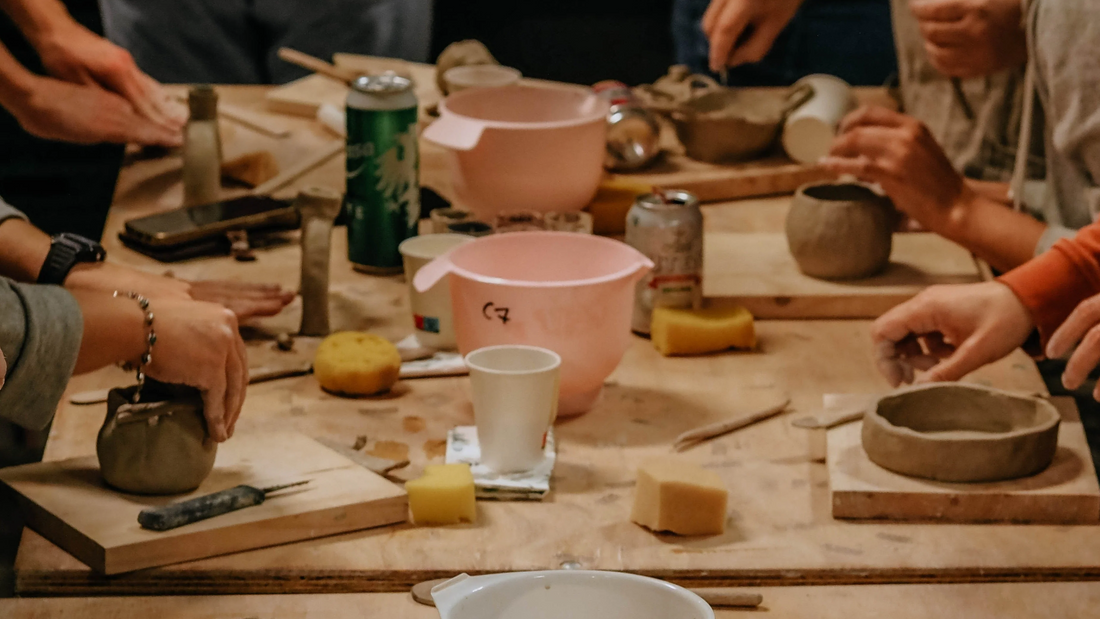What is handbuilding ?

Handbuilding Techniques in Ceramics
Handbuilding is a versatile method of creating ceramic forms without a potter's wheel. The three main techniques are pinching, coiling, and slab building. Each offers unique possibilities for artistic expression and functional pottery.
Pinching
Pinching is the most basic handbuilding technique:
1. Start with a ball of clay
2. Press thumb into the center to create a hole
3. Pinch and rotate the clay to thin walls and shape the form
4. Smooth surfaces with fingers or tools
Pinching is ideal for creating small bowls, cups, and organic shapes. It's an excellent technique for beginners to develop a feel for the clay.
Coiling
Coiling involves building up forms using rolls of clay:
1. Roll out long, even coils of clay
2. Stack coils in a spiral or circular pattern
3. Blend coils together by pinching or smoothing
4. Build up the form gradually, adding height and shape
Coiling allows for the creation of larger and more complex forms. It can be used for both functional and sculptural pieces.
Slab Building
Slab building uses flat sheets of clay to construct forms:
1. Roll out clay into even slabs using a rolling pin or slab roller
2. Cut slabs into desired shapes using tools or templates
3. Score and slip edges to join pieces
4. Assemble slabs to create the form
5. Smooth joints and refine the shape
Slab building is versatile for creating both geometric and organic forms. It's particularly useful for angular shapes and architectural elements.
Advanced Techniques
- Combine methods: Use pinching for bases, coiling for walls, and slabs for lids
- Texture slabs before assembly for added visual interest
- Use molds: Drape slabs over or press into forms for consistent shapes
- Create templates for repeatable designs
- Experiment with soft vs. stiff slabs for different effects
If you would like to experiment with these different techniques, join us in one of our handbuilding courses !